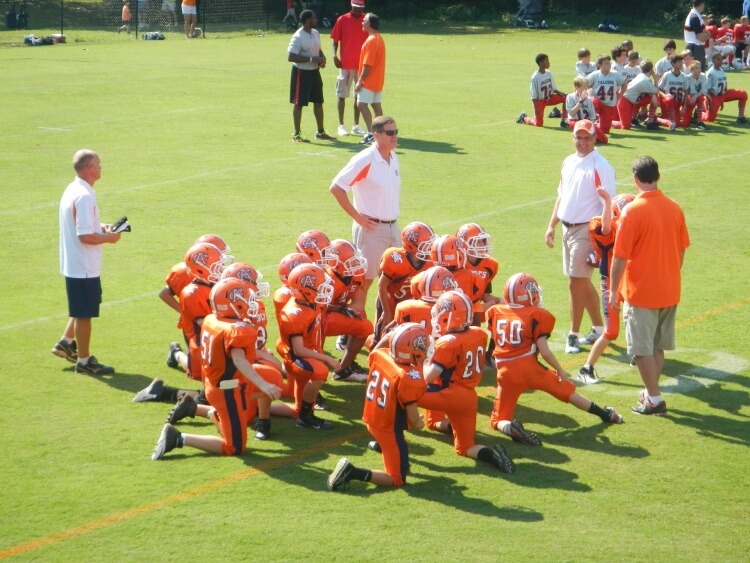Continuing our Psychological Skills Training series in pelinks4u, this month’s article focuses on sportsmanship. Use “site search” to locate previous articles and also see the list included in this article.

Bring to practice:
- Copies of the athlete handout
- Pencils
- Yardstick
Review (with athletes):
- During our psychological skills training we’ve learned a variety of techniques to make us mentally tougher.
- One of the benefits of mental toughness is being able to demonstrate good sportsmanship regardless of whether or not others are acting similarly.
Today: Sportsmanship
Introduction to Athletes: Athletes of every age need to demonstrate good sportsmanship to all connected with sport. We must understand that we are perhaps the most visible representatives of our schools and communities. Athletes are expected to treat opponents, officials, spectators and all others associated with sport with civility, dignity, and respect. There will be no tolerance for taunting, fighting or other acts of aggression. To help us think about sportsmanship we are now going to do the following activity.
Activity: Goal – Team bonding and reflecting upon sportsmanship. Place athletes in groups of 4. Depending on the sport, consider grouping athletes with those whom they interact most or who have similar athletic responsibilities/challenges. Coaches can also take into account the ages of athletes (mixing up older and younger) and/or athletes’ temperaments (those who already display good sportsmanship consistently with those who don’t). Decide if you will or won’t collect the handouts: this will impact what athletes write.
- If needed, have athletes introduce themselves to each other.
- On the handout, each athlete writes about a good sportsmanship situation the athlete has experienced or witnessed. Allow about 5 minutes.
- Have athletes discuss what they wrote with group members. Then have athletes report out one of the group member’s examples. As each group reports, ask them if possible to give a situation that is different than has already been reported. NOTE: If this activity is done with very large teams, break the teams up into smaller units so that only 5-6 groups are reporting out to each other.
- On the handout, each athlete writes about an unsportsmanlike situation the athlete has experienced or witnessed. Allow about 5 minutes.
- Repeat the procedure outlined in #3.
- Pull out the yardstick and measure one of the athletes’ height. Then say, “How we use a yardstick to measure something”. Followed by, “What is the yardstick you use to measure if an action is sportsmanlike or not”? Have athletes write their individual response on their papers.
- Have athletes share these with their group and then share with the whole team. As athletes respond and you lead the discussion, you may hear some of the following:
- “Do unto others as you want them to do to you” (Luke 6:31 Bible).
- If it creates an uneven playing field
- Kind
- Loving
- Honest
- Only bad if I “get caught”
- On their handouts, have each athlete write specific behaviors he or she will or won’t do. Have athletes share these with their group and then share with the whole team. You will no doubt hear some behaviors that an “anonymous” group member says he or she will do that are unsportsmanlike. Take time to discuss why this is not acceptable behavior. NOTE. It’s likely that many of your athletes will display “situational ethics,” behaviors that vary depending on the situation. Although you can’t change their whole approach to right and wrong with this one lesson, do be clear on what behaviors are and are not allowed by you regardless of the situation.
- Finally, lead a discussion on how your athletes are expected to respond to unsportsmanlike behavior from others. Emphasize that they can’t control others but can control their own behavior. Conclude by explaining that if they allow themselves to get sucked into unsportsmanlike behavior this can ultimately make them less successful as athletes. If appropriate, include information they have learned from past sessions on their self-talk and arousal levels for good athletic performance.
- If you have an athlete who seems to struggle with unsportsmanlike behavior, consider referring him/her to the appropriate helping professionals (counselor, guidance counselor) and, if the athlete is a minor, share your observation with a parent/guardian.
- If your organization has a statement about sportsmanship, put it on a handout and discuss it with the athletes and ideally also with their parents.

